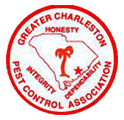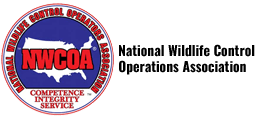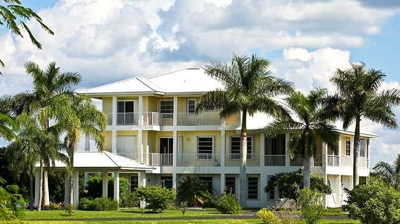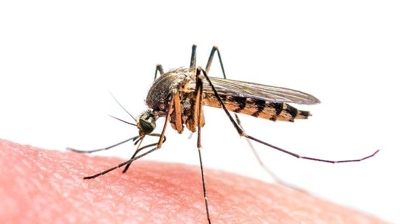
Pest Library
Common Pest Identification & Prevention In Edisto Island, SC
Every homeowner needs to learn about the pests that are common in their area. Keeping pests out of your home is important to your family’s health, maintaining your home’s structure, and preventing your personal belongings from being damaged. Knowing what pests to keep a lookout for is key to preventing a large-scale infestation of pests from taking over your Edisto Island property.
To assist you in guarding your home against problematic pests in Edisto Island, we have put together a pest control guide. The below information will provide you with helpful information about local pests, including steps you can take to prevent them!
Ants
Edisto Island provides ants with many different places to build large outdoor nests like our yards, sandy beaches, parks, wooded areas, and other open spaces. Ants live in large numbers all around us and find their way into our homes through openings they discover in exterior walls while out exploring. If your home provides them with suitable food sources or shelter from weather extremes, they may decide to stay. If you see a few ants traveling in or around your home, know that thousands more live nearby, waiting to hear from the scout ants that they should follow.

In our area, many different species of ants could find their way into our homes. Some, like fire ants, bite and sting, and others, like red carpenter ants, cause costly structural damage inside homes and other structures. However, most ants like acrobat ants, pyramid ants, and little black ants are nuisance ants that are difficult to control and eliminate. No matter the species, all ants that find a way into your home are capable of contaminating surfaces and food with bacteria and becoming a frustration for you and your family to deal with day after day. Ants live outside all around us. The smell of food is likely to attract them to your property. Open trash cans, recycling bins, outdoor eating areas, pet food, and gardens areas are common targets for ant activity.
The following prevention tips will help you guard your Edisto Island home from ants and make your property less attractive to these regular household pests.
Many ants, including carpenter ants, are attracted to damp or decaying wood. If any wood in your home or on your property is water damaged, immediately remove it and, if necessary, replace it with sound wood.
Reduce excess moisture in your house by making sure gutters are clear, repairing leaky pipes, and using air conditioners and dehumidifiers.
Keep ants from wandering inside your home by sealing cracks in the foundation, making sure there is weatherstripping around windows and doors, and repairing damaged shingles or siding.
Keep lids on trash cans and recycling bins in your yard, maintain gardens, and keep outdoor eating areas free of leftover food and drink containers.
Cockroaches
South Carolina is known for its humid, warm weather, enabling many insects to thrive, including one of the most common and troubling pests, the cockroach. Cockroaches are a year-round threat, with populations booming during the warm summer months. Along with being a nuisance, cockroaches are unwanted in our homes because of their ability to spread diseases, contaminate food, and trigger allergies and asthma attacks. In our area, different species of cockroaches can thrive both inside or outside our homes. Three of the most common species in our area include:

- German cockroaches: These roaches primarily live indoors wherever food is stored or prepared.
- American cockroaches: This species can live successfully outside in yards or gardens or inside homes or businesses.
- Asian cockroaches: These roaches prefer to live outside but regularly find their way inside our structures to escape unsuitable weather.
German cockroaches primarily live indoors and do quite well in areas where people and structures provide them with food, water, and shelter. In order to move from place to place, these roaches like to hitchhike inside things we are transporting like bags, boxes, furniture, and appliances. American cockroaches and Asian cockroaches often move into our homes when there is a lack of food or temperatures begin to cool. After moving inside, all three species tend to gather in the same areas — kitchens, bathrooms, basements, or wall voids near leaky pipes. They may also collect in the backs of drawers, under sinks, or behind large appliances.
Just hoping that cockroaches won’t find their way into your home isn’t enough. Our professional services and the following prevention tips will help you prevent cockroaches from entering your home and make your property less attractive to these unwanted pests.
- Eliminate food sources that cockroaches can find in your yard. Keep lids on trash cans and recycling bins and outdoor eating clear of food debris, and uneaten pet food.
- Inside your home, keep kitchen and eating areas cleaned up and free of leftover food.
- Regularly vacuum your home to pick up crumbs, and other debris cockroaches feed on.
- Seal openings in your home’s exterior walls where cockroaches could enter.
- Reduce excess moisture around your home by repairing leaky pipes, clearing clogged drains, and using dehumidifiers.
Mosquitoes
Tiny and easily squished by a hand or newspaper, somehow, the mosquito is one of the world’s most annoying and dangerous creatures. Female mosquitoes need to have blood meals to create healthy eggs. During their lifetime, they will feed on various people and animal hosts. They can spread many serious diseases like the West Nile virus, dengue fever, chikungunya, and potentially deadly parasitic heartworms to our pets during the feeding process. These tiny, biting flies are also well-known for ruining outdoor events and making it impossible to enjoy spending time outside in our yards. Nobody can enjoy their time outdoors when being constantly swarmed and relentlessly bitten by mosquitoes.

Mosquitoes are most active in hot, humid weather, making South Carolina a place that these pests thrive. The more rain and standing water available, the more mosquitoes there will be. Adult females lay their eggs on top of areas of standing water or in areas prone to flooding; when the eggs hatch, the larvae develop in the standing water, emerging as adults. Properties with or near wooded areas, marshes, ditches, ponds, low-lying areas, and other areas where standing water builds up are most prone to large populations of mosquitoes. Standing water often builds up in clogged gutters, containers, and over-watered lawns and gardens and provides breeding grounds for mosquitoes in our South Carolina yards near our homes and families.
The following prevention tips will help you make your yard less attractive to mosquitoes:
- Keep your yard neat. Mosquitoes like to rest in areas of dense vegetation. Keep grass cut short and remove overgrown landscaping.
- Dump out rainwater that has collected in containers, and store containers not being used upside down.
- Regularly empty and refill with fresh water birdbaths, wading pools, and your pet’s water dishes.
- Never prop open your windows or doors to help keep mosquitoes out of your house.
- Make sure window screens are intact.
- Mosquitoes only have one pair of wings. A strong wind can easily throw them off course. Use fans around outdoor sitting or eating areas to keep mosquitoes away from you and your family.
- Use professional mosquito control services to completely eliminate mosquitoes.
Nuisance Wildlife
When you first spot wild animals on your property, you may not take much notice or think much of it; after all, wildlife is all around us. While the occasional squirrel, raccoon, or bird traveling across your yard isn’t a problem, when they decide to stay, they become a huge problem. Some of the biggest issues wild animals cause include:

- Property damage like torn screens or vents, missing roof shingles, damaged gutters, chewed through wires or cables.
- Waking up to overturned garbage cans.
- Dug up yards and gardens.
- Inability to enjoy your property. No one wants to be startled by an alligator or snake!
- Health threats. Wildlife can spread diseases through their feces and the bacteria they carry on their bodies.
- Physical harm. Many wild animals will defend themselves when startled or cornered by biting or scratching.
In South Carolina, we share our outdoor spaces with many different types of wild animals; unfortunately, some of them regularly make themselves at home on our Edisto Island properties. While they enjoy the benefits of the food, water, and shelter our yards and houses provide, we deal with the consequences of their visits. Some of the most common wildlife intruders that we deal with regularly are alligators, armadillos, birds, opossums, raccoons, and snakes. If wildlife ever becomes a threat to your property or family, reach out to us at Apex of Edisto Pest Management to learn about our humane wildlife control services.
The following prevention tips will help you guard your Edisto Island home against nuisance wild animals and make your property less attractive to these problematic pests:
- Place a brick or other heavy object at the bottom of trash cans to help prevent them from easily being knocked over.
- Make sure trash cans and compost bins have tight-fitting lids on them.
- Cut back overgrown grass, weeds, and landscaping that gives wildlife like alligators and snakes fewer places to hide.
- Cut back overgrown shrubbery and trees away from your home’s exterior.
- Make sure screens and covers over chimneys and vents are secure to help keep wildlife intruders out of your house.
- Repair any roof damage or damaged siding.
- Build garden areas away from the outside of your home.
Stinging Insects
An intricate part of nature, stinging insects like wasps, hornets, bees, yellow jackets, and dirt daubers provide many benefits to people, animals, and plants. Predatory species, helping to control nuisance insect numbers, and bees and others help pollinate crops and plants. As helpful and needed as these insects are, they become unwanted guests when they build their nests in our yards in high traffic areas or in or on our homes. These pests are considered dangerous because of their stinger and the venom they can inject. Their stings are quite painful and create allergic reactions that range from mild to life-threatening depending on the person

Stinging insects are a common problem in our yards because they provide them with plenty of access to food and nesting spots. They build nests in grassy areas, on tree branches, and in tree hollows, woodpiles, and shrubbery. Our homes also provide them with appropriate nesting sites like under roof eaves, behind shingles or siding, in doorways, or under decks. Stinging insects are at their highest numbers in the late summer and early fall, and the workers are out and about frantically trying together food to bring back to the nest. The larger the number of stinging insects nesting or foraging for food in your yard, the more contact you will have with these pests, and the more likely a sting will occur.
The following prevention tips will help you guard your Edisto Island home and family against stinging insects and make your property less attractive to these potentially dangerous pests:
- Provide fewer nesting spots in your yard by filling in ground holes, cutting back overgrown shrubs and trees, removing tree stumps, and getting rid of piles of yard debris.
- Reduce the number of flowering plants you have around your windows and doorways to make your high traffic areas less attractive to stinging insects.
- Keep lids on trash cans and recycling bins to keep foraging stinging insects out of them.
- Reduce water sources by keeping gutters clear of debris, filling in low-lying areas, and not overwatering gardens and flowerbeds.
- Keep your property’s grass cut short.
Termites
Termites are wood-eating pests that wreak havoc on any structure they find their way into. In South Carolina, we have several different species of termites that we need to worry about- Eastern subterranean termites, drywood termites, and Formosan termites. Subterranean termites nest in the ground and move from the nest to a food source each day. They require contact with the soil and move into pieces of wood that make direct contact with the ground. The Formosan termite is another type of subterranean termite but can live above the ground and enter into structures from the roof or other above-ground locations. The drywood termite feeds on and lives within dry, sound wood, including antique furniture, flooring, and wood trim.

Because they feed on wooden structures, termites are dangerous to our homes but not usually to our physical health. They move inside without much notice and work day and night until their damage becomes noticeable. Termite damage is not typically covered by insurance policies and can become very costly to repair. Termites are social insects that thrive in the warm, humid climate South Carolina offers. They live together in large colonies, working together like a well-oiled machine to gather food to bring back to the nest. Once a year, winged reproductive members will emerge from a mature nest to find a mate and create a new nest; witnessing a termite swarm on or near your property is a cause for immediate action.
The following prevention tips will help you guard your Edisto Island home against termites and make your property less attractive to these potentially dangerous pests:
- Eliminate wood contact with the ground on your property.
- Remove wooden debris or cardboard from around and under your home in decks, crawl spaces, and flowerbeds (mulch).
- Any water-damaged wood in your house should be removed and replaced with sound wood.
- Remove dense vegetation or shrubbery away from the exterior of your home to help keep the soil around your house drier and make it less attractive to termites.
- Prevent rainwater from getting into your home by ensuring your roof is in good repair, fixing damaged siding, and making sure the weatherstripping around windows and doors is intact.
- Reduce moisture levels in your home by using dehumidifiers and air conditioners.
- Learn to identify the signs of termite activity and use professional termite control measures at the first sign of a problem.

Why Choose Apex of Edisto Pest Management?
-
Same Day Services
-
Eco-Friendly Options
-
Family Owned & Operated
-
Over 20 Years of Experience
What Our Customers Are Saying
-
“Responded quickly when I requested service, found, and fixed the problem.”- Susan P.
-
“Excellent, professional service!”- Sheila H.
-
“He gave me peace of mind when he located the carpenter ant nest and treated it.”- Donna B.
-
“Knowledgeable owner and employees who listen and work courteously and efficiently.”- Susan P.







